|
Mention
 among
Aston enthusiasts and it immediately conjures up images of high performance">
among
Aston enthusiasts and it immediately conjures up images of high performance">

|
Mention
 among
Aston enthusiasts and it immediately conjures up images of high performance, far exceeding
that of the normal cars. While the Vantage name has
been used since the early 1950’s it's origin has remained obscure and a detailed
analysis of the cars has never been made. A new book by Kean Rogers sheds
light on Vantage history and details Britain’s first real “Supercar” the
V8 Vantage.
among
Aston enthusiasts and it immediately conjures up images of high performance, far exceeding
that of the normal cars. While the Vantage name has
been used since the early 1950’s it's origin has remained obscure and a detailed
analysis of the cars has never been made. A new book by Kean Rogers sheds
light on Vantage history and details Britain’s first real “Supercar” the
V8 Vantage.
|
|
The "Vantage" first appeared in the sales brochures of January 1951, in the
guise of a more powerful engine option for the DB2. For over 38 years the origin of the
name had remained obscure until a chance meeting at Aston Martin Lagonda in 1997.
A tour of the works had been organised by a young Mr. Robertson for
himself and his father, an ex-Aston employee from the Feltham days. As it transpired
Robertson Sr. had in fact penned the "Vantage" moniker. Alan Robertson,
newly arrived from the David Brown parent company in Huddersfield, shared an office with
John Wyer at Feltham, both having arrived at the same time in early 1950.
|
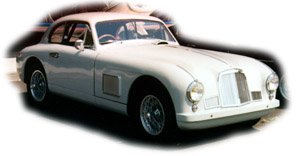
The first: db2 Vantage LML/50/19
|
 The name
"Vantage" was chosen after leafing through a thesaurus looking for suitable tags
for higher performance variants of the then current model, the DB Mk II. Offering
125bhp, versus 105 bhp for the standard engine, Vantage represented the tuned state for
Aston Martin's fine handcrafted automobiles and was easily distinguished by a
"V" in the engine number and obviously higher levels of performance.
The name
"Vantage" was chosen after leafing through a thesaurus looking for suitable tags
for higher performance variants of the then current model, the DB Mk II. Offering
125bhp, versus 105 bhp for the standard engine, Vantage represented the tuned state for
Aston Martin's fine handcrafted automobiles and was easily distinguished by a
"V" in the engine number and obviously higher levels of performance.
|
|
Interest in marketing the name had waned by 1953 when the Vantage engine became
standard issue on the DB2/4, with no mention of it appearing in sales information, the
"V" in the engine number the only indication. It wasn't until early 1962
that the Vantage name appeared once again in Aston's marketing literature.
|
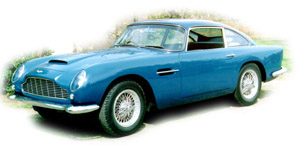
db4 Vantage DB4/983/R
|
 For the first time
"Vantage" appeared as a distinct model name in the form of the DB4 Vantage. The
Series IV DB4 was the recipient of the name; however, it represented more than just an
uprated engine specification. Visually it was distinguished from
the standard car by a restyled front-end with sloping faired-in headlights. Until
the advent of the V8 Vantage in 1977, these were the only Vantage models to carry body
modifications distinct from the standard car.
For the first time
"Vantage" appeared as a distinct model name in the form of the DB4 Vantage. The
Series IV DB4 was the recipient of the name; however, it represented more than just an
uprated engine specification. Visually it was distinguished from
the standard car by a restyled front-end with sloping faired-in headlights. Until
the advent of the V8 Vantage in 1977, these were the only Vantage models to carry body
modifications distinct from the standard car.
|

db5 Vantage
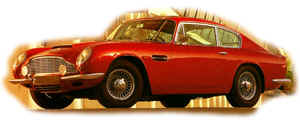
db6 mk2 Vantage
|
 Plans were made to
offer the DBSV8, the first of the V8-engined Astons introduced in 1969, in uprated Vantage
form but they never saw production. Plans were made to
offer the DBSV8, the first of the V8-engined Astons introduced in 1969, in uprated Vantage
form but they never saw production.
|
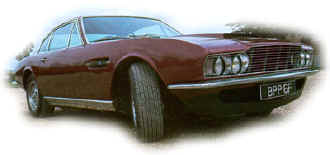
dbs V8 Vantage prototype DBS/5002/R
|
 The classic,
single-headlight AM V8 saloon (no longer a 'DB', the company's post-war savior David Brown
having sold the company in February 1972) appeared in May of 1972 and alongside it the AM
Vantage, a tuned six cylinder car rather than a Vantage version of the V8. It
represented a departure from custom as Vantage was usually reserved for the tuned version
of the standard production series of car. This was unusual in the fact that no standard
six cylinder car was available. It was to be another five years - and after another
change of ownership - before the first V8 Vantage joined the range.
The classic,
single-headlight AM V8 saloon (no longer a 'DB', the company's post-war savior David Brown
having sold the company in February 1972) appeared in May of 1972 and alongside it the AM
Vantage, a tuned six cylinder car rather than a Vantage version of the V8. It
represented a departure from custom as Vantage was usually reserved for the tuned version
of the standard production series of car. This was unusual in the fact that no standard
six cylinder car was available. It was to be another five years - and after another
change of ownership - before the first V8 Vantage joined the range.
|
|
 At last Aston - and
Britain - had its first top-drawer 'supercar'. The V8 Vantage car that went on sale in
February 1977 was quite different from anything that had gone before. It was now a
distinct model, although that was not the original intent, as opposed to a higher
performance variant of the standard car. During the V8 Vantage's 12 years of
production Volante and Zagato variants were also introduced. At last Aston - and
Britain - had its first top-drawer 'supercar'. The V8 Vantage car that went on sale in
February 1977 was quite different from anything that had gone before. It was now a
distinct model, although that was not the original intent, as opposed to a higher
performance variant of the standard car. During the V8 Vantage's 12 years of
production Volante and Zagato variants were also introduced.
|
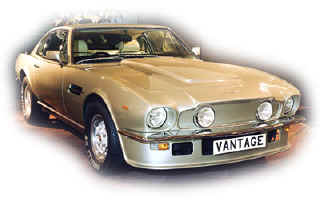
V8 Vantage
|
 The next Vantage to appear
was loosely based on the Virage. Revised nose and tail treatments
identified the car externally while a supercharged V8, revised chassis and suspension were
less visible under the skin. The most powerful Aston ever built, it has also proven
to be the most successful and remains in production until 2000.
The next Vantage to appear
was loosely based on the Virage. Revised nose and tail treatments
identified the car externally while a supercharged V8, revised chassis and suspension were
less visible under the skin. The most powerful Aston ever built, it has also proven
to be the most successful and remains in production until 2000.
|
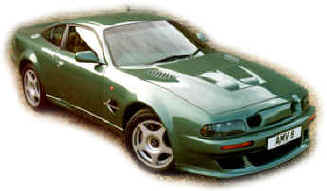
V8 Vantage Le Mans
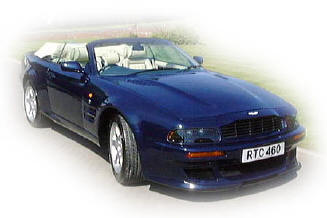
V8 Vantage
Volante SWB
|
The last of the breed: the final V8 engined
Vantages were a special run of eight Vantage Volantes with the shorter wheelbase
of the V8 Vantage coupe. Offered only by special invitation to Aston's
most loyal customers, each was finished to the owner's individual requirements.
Options included the Le Mans bodywork, 600 bhp engine option and various body
enhancements.
|
|
 The promise of things to come. A concept
car developed to showcase Aston Martin's capabilities but with no basis in
production. The 2001 V12 Vanquish continues the theme but with simpler
suspension and a less radical interior. Visual and interior elements along with
the engine had already been incorporated into the DB7 Vantage.
The promise of things to come. A concept
car developed to showcase Aston Martin's capabilities but with no basis in
production. The 2001 V12 Vanquish continues the theme but with simpler
suspension and a less radical interior. Visual and interior elements along with
the engine had already been incorporated into the DB7 Vantage.
|
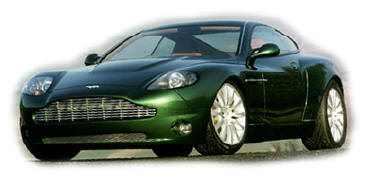
project Vantage Concept Car
|
 The latest in the line, the DB7 Vantage
incorporates the engine and styling cues first seen on the Project Vantage. Touchtronic
shift buttons on the steering wheel to control the 5-speed automatic
transmission were introduced January 2000.
The latest in the line, the DB7 Vantage
incorporates the engine and styling cues first seen on the Project Vantage. Touchtronic
shift buttons on the steering wheel to control the 5-speed automatic
transmission were introduced January 2000.
|
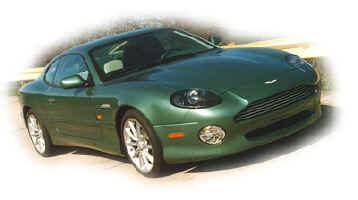
db7 Vantage
|
The
information within this website is provided for educational purposes to
parties interested in learning about the Aston Martin Automobile. It is
true and complete to the best of my knowledge. |
|
This is not an
official web site and has no connection with Aston Martin Lagonda Ltd nor
the Aston Martin Owners Club and is not authorised by them. Some
words, model names, logos and designations appear on this website in
pictures and text where they are used for identification purposes only.
They are the property of Aston Martin Lagonda Ltd., Aston Martin
Owners Club and registered copyright owners. |
|
Please do not
reproduce any part of this website or images on these pages without my
express permission. As this is an educational site permission will
be readily given, in most circumstances. |
|

